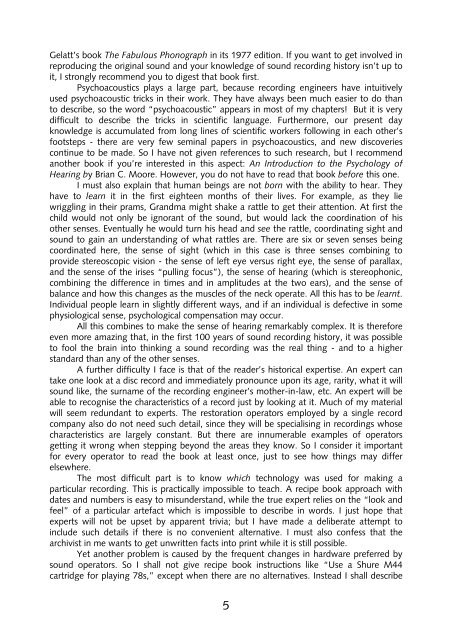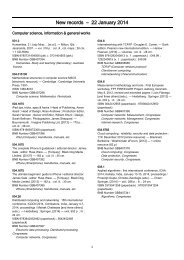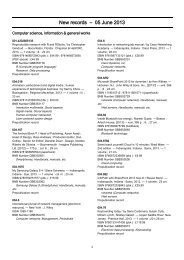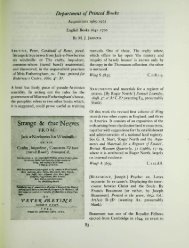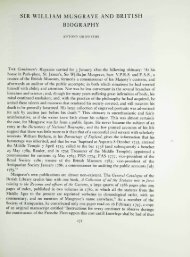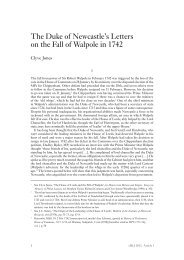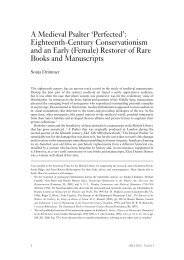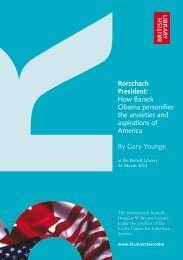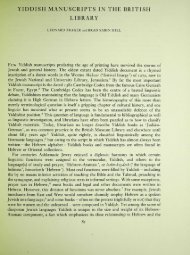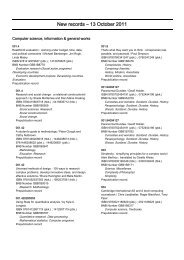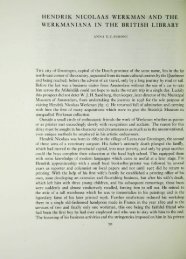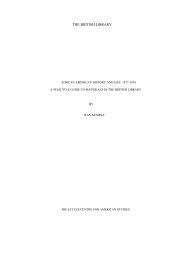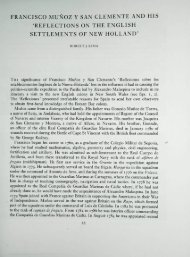MANUAL OF ANALOGUE SOUND RESTORATION ... - British Library
MANUAL OF ANALOGUE SOUND RESTORATION ... - British Library
MANUAL OF ANALOGUE SOUND RESTORATION ... - British Library
You also want an ePaper? Increase the reach of your titles
YUMPU automatically turns print PDFs into web optimized ePapers that Google loves.
Gelatt’s book The Fabulous Phonograph in its 1977 edition. If you want to get involved in<br />
reproducing the original sound and your knowledge of sound recording history isn’t up to<br />
it, I strongly recommend you to digest that book first.<br />
Psychoacoustics plays a large part, because recording engineers have intuitively<br />
used psychoacoustic tricks in their work. They have always been much easier to do than<br />
to describe, so the word “psychoacoustic” appears in most of my chapters! But it is very<br />
difficult to describe the tricks in scientific language. Furthermore, our present day<br />
knowledge is accumulated from long lines of scientific workers following in each other’s<br />
footsteps - there are very few seminal papers in psychoacoustics, and new discoveries<br />
continue to be made. So I have not given references to such research, but I recommend<br />
another book if you’re interested in this aspect: An Introduction to the Psychology of<br />
Hearing by Brian C. Moore. However, you do not have to read that book before this one.<br />
I must also explain that human beings are not born with the ability to hear. They<br />
have to learn it in the first eighteen months of their lives. For example, as they lie<br />
wriggling in their prams, Grandma might shake a rattle to get their attention. At first the<br />
child would not only be ignorant of the sound, but would lack the coordination of his<br />
other senses. Eventually he would turn his head and see the rattle, coordinating sight and<br />
sound to gain an understanding of what rattles are. There are six or seven senses being<br />
coordinated here, the sense of sight (which in this case is three senses combining to<br />
provide stereoscopic vision - the sense of left eye versus right eye, the sense of parallax,<br />
and the sense of the irises “pulling focus”), the sense of hearing (which is stereophonic,<br />
combining the difference in times and in amplitudes at the two ears), and the sense of<br />
balance and how this changes as the muscles of the neck operate. All this has to be learnt.<br />
Individual people learn in slightly different ways, and if an individual is defective in some<br />
physiological sense, psychological compensation may occur.<br />
All this combines to make the sense of hearing remarkably complex. It is therefore<br />
even more amazing that, in the first 100 years of sound recording history, it was possible<br />
to fool the brain into thinking a sound recording was the real thing - and to a higher<br />
standard than any of the other senses.<br />
A further difficulty I face is that of the reader’s historical expertise. An expert can<br />
take one look at a disc record and immediately pronounce upon its age, rarity, what it will<br />
sound like, the surname of the recording engineer’s mother-in-law, etc. An expert will be<br />
able to recognise the characteristics of a record just by looking at it. Much of my material<br />
will seem redundant to experts. The restoration operators employed by a single record<br />
company also do not need such detail, since they will be specialising in recordings whose<br />
characteristics are largely constant. But there are innumerable examples of operators<br />
getting it wrong when stepping beyond the areas they know. So I consider it important<br />
for every operator to read the book at least once, just to see how things may differ<br />
elsewhere.<br />
The most difficult part is to know which technology was used for making a<br />
particular recording. This is practically impossible to teach. A recipe book approach with<br />
dates and numbers is easy to misunderstand, while the true expert relies on the “look and<br />
feel” of a particular artefact which is impossible to describe in words. I just hope that<br />
experts will not be upset by apparent trivia; but I have made a deliberate attempt to<br />
include such details if there is no convenient alternative. I must also confess that the<br />
archivist in me wants to get unwritten facts into print while it is still possible.<br />
Yet another problem is caused by the frequent changes in hardware preferred by<br />
sound operators. So I shall not give recipe book instructions like “Use a Shure M44<br />
cartridge for playing 78s,” except when there are no alternatives. Instead I shall describe<br />
5


